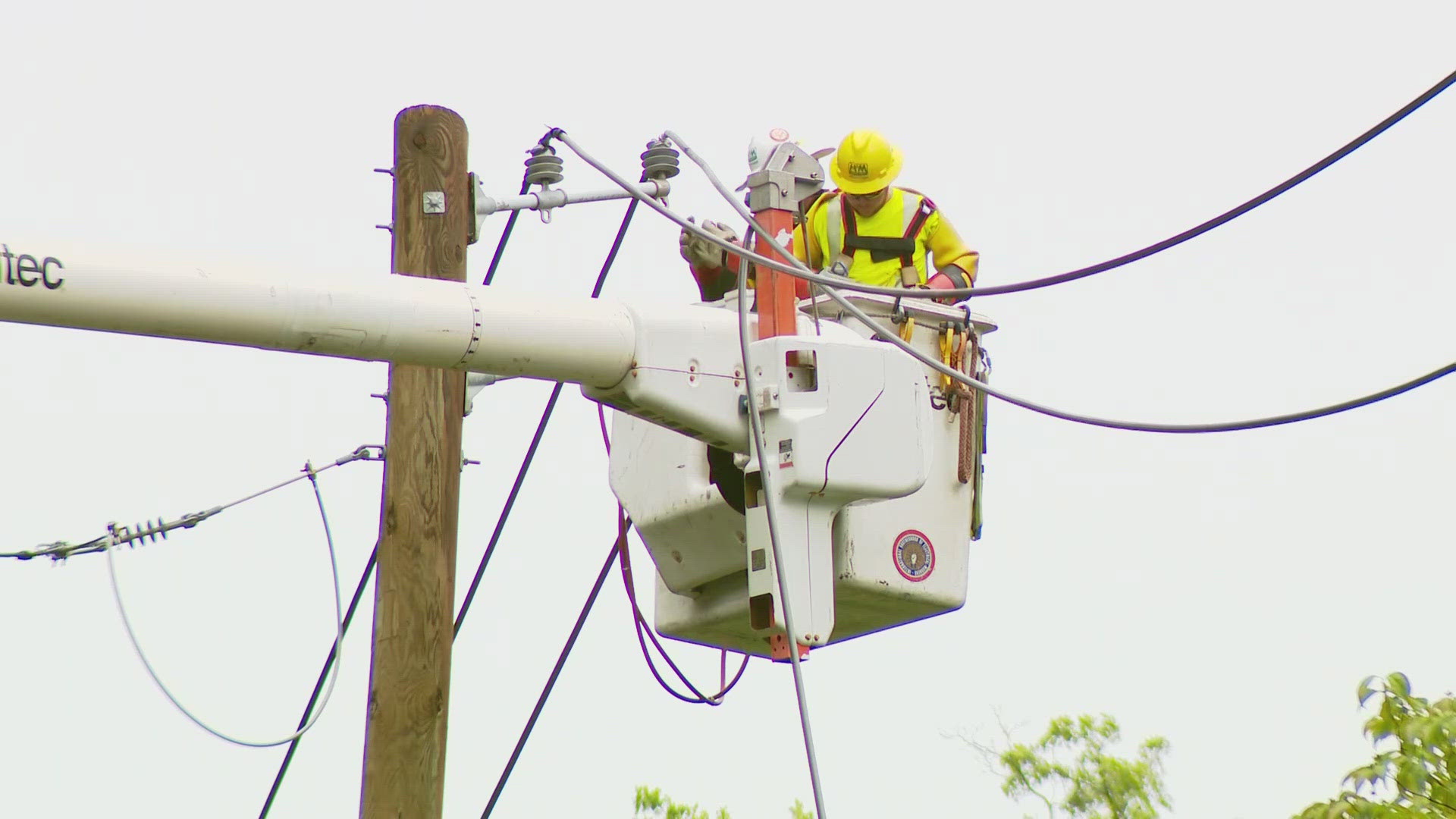WASHINGTON — Severe storms can sometimes push through the D.C. region, causing damage and destruction. But in its path, the sky sometimes puts on a stunning show of the most vibrant sunsets. So why the brilliant colors? The short answer is a break in the clouds and rain-cleared air.
Where Sunrises & Sunsets Get Their Colors
Let's first start with an explanation of where sunrises and sunsets get their colors from -- it comes down to light and length.
At sunrise and sunset, sunlight takes a longer path as it travels through the atmosphere. This allows for the more blue light to be scattered and reds and oranges to be more visible.
Sunlight produces a spectrum of colors. Yep, there are reds, violets, blues, and orange hues, and they travel in waves to reach the earth.
You can think of these lights as if they are on a road. Blues light takes short roads (short waves), and orange and reds take long roads (long waves).
During the day, blue light is scattered in many directions by the gas and particles in the air. Blue light is scattered more than other colors and it has a shorter path, which is why the sky appears blue during the day.
Atmosphere and Ocean Sciences Professor Steven Ackerman, of the University of Wisconsin-Madison explained the phenomenon in a blog post.
“Because the sun is low on the horizon, sunlight passes through more air at sunset and sunrise than during the day, when the sun is higher in the sky," he wrote. "More atmosphere means more molecules to scatter the violet and blue light away from your eyes. If the path is long enough, all of the blue and violet light scatters out of your line of sight. The other colors continue on their way to your eyes. This is why sunsets are often yellow, orange, and red.”
Red has the longest wavelength of visible light and tends to block out other colors on its long path from the sun through the atmosphere.
The Role of Clouds and Cleaner Air
Clouds also play a role in seeing a gorgeous sunset. That's because certain clouds can reflect the red and orange hues toward the ground. This works best with high and mid-level clouds, although rarely with low clouds as well. A retired meteorologist from The Storm Prediction Center and expert on sunrises and sunsets, Stephen Corfidi explains.
"To produce vivid sunset colors, a cloud must be high enough to intercept "unadulterated" sunlight," wrote Corfidi.
After looking over satellite data over the D.C. region during the severe storms, Corfidi said we lucked up and got a sliver of light to come through.
"I can imagine that a beam of incoming sunlight coming through the break in the left-over anvil clouds over the Shenandoah Valley might have been projected onto the sloping anvil closer to the DC area," he wrote in an email to WUSA 9. As the clouds slope upward, they aid in putting on a beautiful display. An anvil cloud is a type of storm cloud, noted for its anvil shape.
"If just enough light is able to penetrate high, sloping, post-storm clouds, "vibrant" colors sometimes can be seen," Corfidi said.
The cleaner the air is, the more vibrant the sunset after a storm. Corfidi said that some storms are strong enough to clear out larger haze particles that could dim the brighter displays in the sky.
"The cleansing of the lower atmosphere by convective overturning and rainfall can and often are important in helping boost sunset 'vibrancy' (coloration) because the presence of larger particles tends to mute coloration (by making the colors more pastel," Corfidi told WUSA 9.
He said haze aerosols from trees and industrial sources could diminish the vibrancy of the colors cast on clouds. These haze aerosols are often plentiful in the atmosphere before some storms strike.



